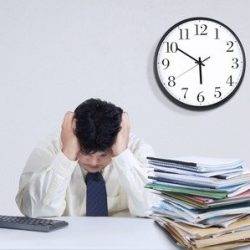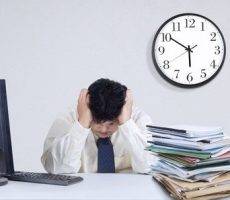October 20, 2016
Fifth of UK staff say stress at work negatively impacts their health 0
 One in five people say their workload as having a negative impact on their health. Respondents to a survey of 2,000 UK workers state their jobs have caused them to suffer from depression and other stress-related illnesses. The research, commissioned by staffing app Coople, and carried out by OnePoll, claims that 30 per cent of respondents said work has made them unhappy and stressed, while more than a quarter (26 per cent) say their job causes arguments with their partner – 8 per cent of which say work has been the major factor in the breakdown of their relationship. Over half of those polled (51 per cent) have attributed a lacklustre social life to their work commitments; with 28 per cent working late, 18 per cent responding to emails out of hours and 10 per cent picking up calls outside of their hours.
One in five people say their workload as having a negative impact on their health. Respondents to a survey of 2,000 UK workers state their jobs have caused them to suffer from depression and other stress-related illnesses. The research, commissioned by staffing app Coople, and carried out by OnePoll, claims that 30 per cent of respondents said work has made them unhappy and stressed, while more than a quarter (26 per cent) say their job causes arguments with their partner – 8 per cent of which say work has been the major factor in the breakdown of their relationship. Over half of those polled (51 per cent) have attributed a lacklustre social life to their work commitments; with 28 per cent working late, 18 per cent responding to emails out of hours and 10 per cent picking up calls outside of their hours.















 Management behaviour is contributing to rising workplace stress levels with employees blaming their own bosses for adding to the pressures they feel, a new study of 1,200 people by MetLife claims. The study suggests that 69 percent of employees say that the behaviour of managers in their organisation has increased stress and that the rising stress is having a major impact on company performance. Around 45 percent of employees say that stress caused by management has led to staff in their organisation taking extended time off. This in turn increases costs and affects productivity as well as impacting other workers who take on an increased workload. Government data estimates that around 35 percent of all work-related ill-health is caused by stress and that stress accounts for 43 percent of all working days lost to ill-health – the equivalent of 9.9 million working days a year at an average of 23 days per case.
Management behaviour is contributing to rising workplace stress levels with employees blaming their own bosses for adding to the pressures they feel, a new study of 1,200 people by MetLife claims. The study suggests that 69 percent of employees say that the behaviour of managers in their organisation has increased stress and that the rising stress is having a major impact on company performance. Around 45 percent of employees say that stress caused by management has led to staff in their organisation taking extended time off. This in turn increases costs and affects productivity as well as impacting other workers who take on an increased workload. Government data estimates that around 35 percent of all work-related ill-health is caused by stress and that stress accounts for 43 percent of all working days lost to ill-health – the equivalent of 9.9 million working days a year at an average of 23 days per case.
 A new survey by office products supplier Viking claims that a third of workers suffer from stress and yet have no one to talk to about it. The authors of the study claims that these findings correlate strongly with people’s overall levels of fulfilment at work, with 46 percent of those surveyed saying they had negative thoughts about their job several times a week. When it comes to a person’s working environment, the results showed that office workers were more stressed than those working from home. Factors that contributed to these stress levels included working overtime, not taking enough breaks, having no one to talk to, job satisfaction, pressure to succeed. It’s no surprise that a lack of breaks is causing stress, with half of office workers admitting to taking no breaks at all during the day, excluding lunch. Conversely, a massive 61 percent of people working from home said they took two to three breaks throughout the day.
A new survey by office products supplier Viking claims that a third of workers suffer from stress and yet have no one to talk to about it. The authors of the study claims that these findings correlate strongly with people’s overall levels of fulfilment at work, with 46 percent of those surveyed saying they had negative thoughts about their job several times a week. When it comes to a person’s working environment, the results showed that office workers were more stressed than those working from home. Factors that contributed to these stress levels included working overtime, not taking enough breaks, having no one to talk to, job satisfaction, pressure to succeed. It’s no surprise that a lack of breaks is causing stress, with half of office workers admitting to taking no breaks at all during the day, excluding lunch. Conversely, a massive 61 percent of people working from home said they took two to three breaks throughout the day.













